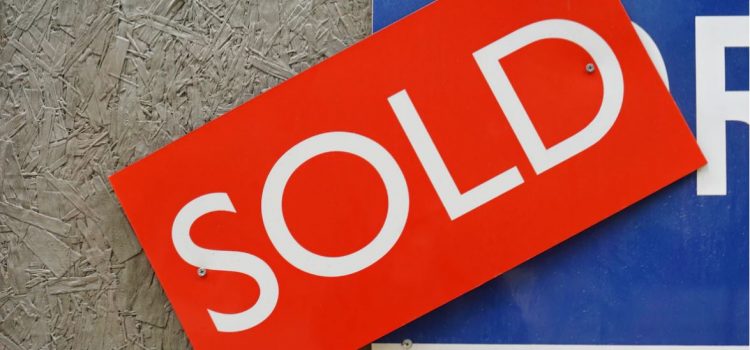
This is a free excerpt from one of Shortform’s Articles. We give you all the important information you need to know about current events and more.
Don't miss out on the whole story. Sign up for a free trial here .
What factors are contributing to the housing shortage? Does it look like prices will go down, or are the high prices here to stay? How is it affecting renters?
If you’ve looked into buying or selling a house recently, then you will have noticed the exorbitant prices of homes at the moment. Unlike the 2006 housing crisis, the high costs have a more complicated cause this time.
Continue reading to learn what factors are causing the current housing shortage and if the prices will go back down.
A Look Into the Current Housing Shortage
The housing market is the hottest it’s been in a decade and a half. The similarities to 2006 have people asking if we’re seeing a repeat of the superheated market that preceded the Great Recession in the late 2000s—and if we’ll see a repeat of the fallout.
Probably not. There are some signs of a coming correction, and the market is likely to cool somewhat. But there are many differences suggesting that today’s boom won’t bring about the same bust as the last.
High Demand
Home prices are being driven in part by high demand. Forced to stay (and work) at home during the pandemic, millions suddenly found they wanted more space or a second home to escape to.
At the same time, Millennials started aging into their 30s—prime homebuying years.
Low Supply
Along with high demand, there’s a historic housing shortage.
- Even before the pandemic, supply was low due to builders who recovered slowly from the Great Recession.
- While the pandemic prompted many people to look for new homes, it encouraged others to stay put: Those already in homes were hesitant to sell them and become buyers themselves, exacerbating the tight market.
- New construction hasn’t kept up with demand. Builders have run into shortages of land, skilled labor, and materials. Higher material costs caused by tariffs and pandemic-induced supply issues have added an average of $26,000 to new builds, and some builders are responding by slowing production, hoping for cost decreases.
Rents Reflect the Problem
Additionally, the housing shortage has disproportionately affected lower-income households. Superheated competition for homes has priced out those with less-than-stellar credit ratings or who can’t afford hefty down payments. It’s been particularly hard on lower-income renters.
Rents are highly responsive to supply and demand pressures, and as luxury metropolitan centers emptied out during the pandemic, lower-income areas experienced an influx. Consequently, landlords are steeply discounting rental properties on the upper end of the market (some even offering up to five months free rent), while increasing prices on the lower end.
Even before the pandemic, one in four rental households spent more than half their pre-tax income on rent. As of the first quarter of 2021, after experiencing widespread income losses, almost a fifth of all renters were behind on rent payments.
The racial disparities of this are pronounced. Black households accounted for 30% of those behind on their rent during the pandemic, Hispanic households accounted for 21%, and Asian households, for 18%. Only 11% of white households were in arrears. This reflects the fact that communities of color were disproportionately affected by unemployment over the course of the pandemic.
Looking for Supply-Side Solutions
Economists agree that the solution to the housing shortage lies in increasing supply—more homes of all types need to be built. This is easier said than done. Between 2001 and 2020, builders added an average of 1.225 million new housing units annually. Even if builders increased that rate to 2.1 million units a year (the level reached briefly in 2005), it would still take a decade to shrink the current deficit.
Further, simply building more homes won’t automatically ease the housing shortage for the people suffering most unless those homes are in a price range they can afford. However, because of high costs, builders are incentivized to build expensive homes despite the fact that demand is strongest for entry-level homes.
President Biden’s infrastructure plan includes several programs aimed at increasing housing supply, such as renovating distressed properties, rethinking zoning restrictions, and converting commercial buildings into residential properties. It also includes proposals to increase home building to over 2 million units a year. Proponents note that this level of new-home construction could create 2.8 million new jobs and generate over $400 billion in economic activity over 10 years, benefitting not just those in need of housing, but the economy as a whole.
Signs of a Slowdown
Will the housing shortage and resulting soaring prices cause another 2006 housing crisis? Probably not. Because this boom is not based on loose credit, economists largely agree that a sharp downturn à la 2007 is unlikely. However, if a crash isn’t likely, a slowdown most certainly is, and signs already indicate that one is underway. Mortgage applications are falling, which usually precedes a downturn in home purchases a month or two later, and new home sales have softened over the past few months, with homes staying slightly longer on the market and fewer bidding wars.
In part, this may indicate a return to a normal seasonal cycle, as people travel once again during the summer and pause their home searches. But it may indicate a true softening of demand, as the world heads back to the office, lockdowns end, the need fades to buy a home that can support work-from-home parents as well as school-from-home kids.
Signs of a Continued Market
A slowdown doesn’t mean a downturn. Even if the market moves from “superhot” to “warm,” economists still expect prices to rise, because the underlying causes of today’s bull market haven’t changed:
- Supply remains low and at current building rates, might not catch up with demand for a decade.
- The largest block of millennials, those born between 1989 and 1993, are entering their thirties, getting married, having kids, and looking for homes. This demographic-driven demand won’t abate for years.
Where Are We Headed?
A few things could, of course, derail the market. A sudden increase in interest rates would do it, and policymakers are also watching to see how the market responds. But outside an unforeseen shock to the market, all signs point to a fairly tight sellers’ market for a few years to come.

Want to fast-track your learning? With Shortform, you’ll gain insights you won't find anywhere else .
Here's what you’ll get when you sign up for Shortform :
- Complicated ideas explained in simple and concise ways
- Smart analysis that connects what you’re reading to other key concepts
- Writing with zero fluff because we know how important your time is






